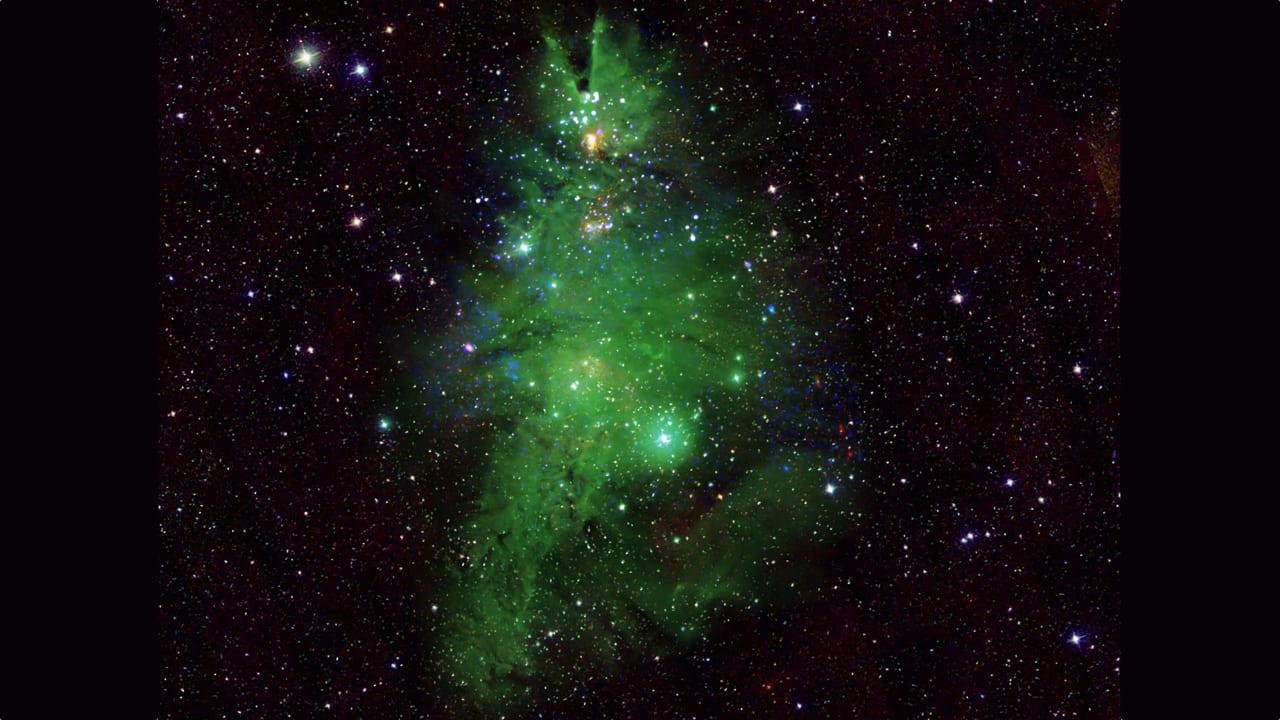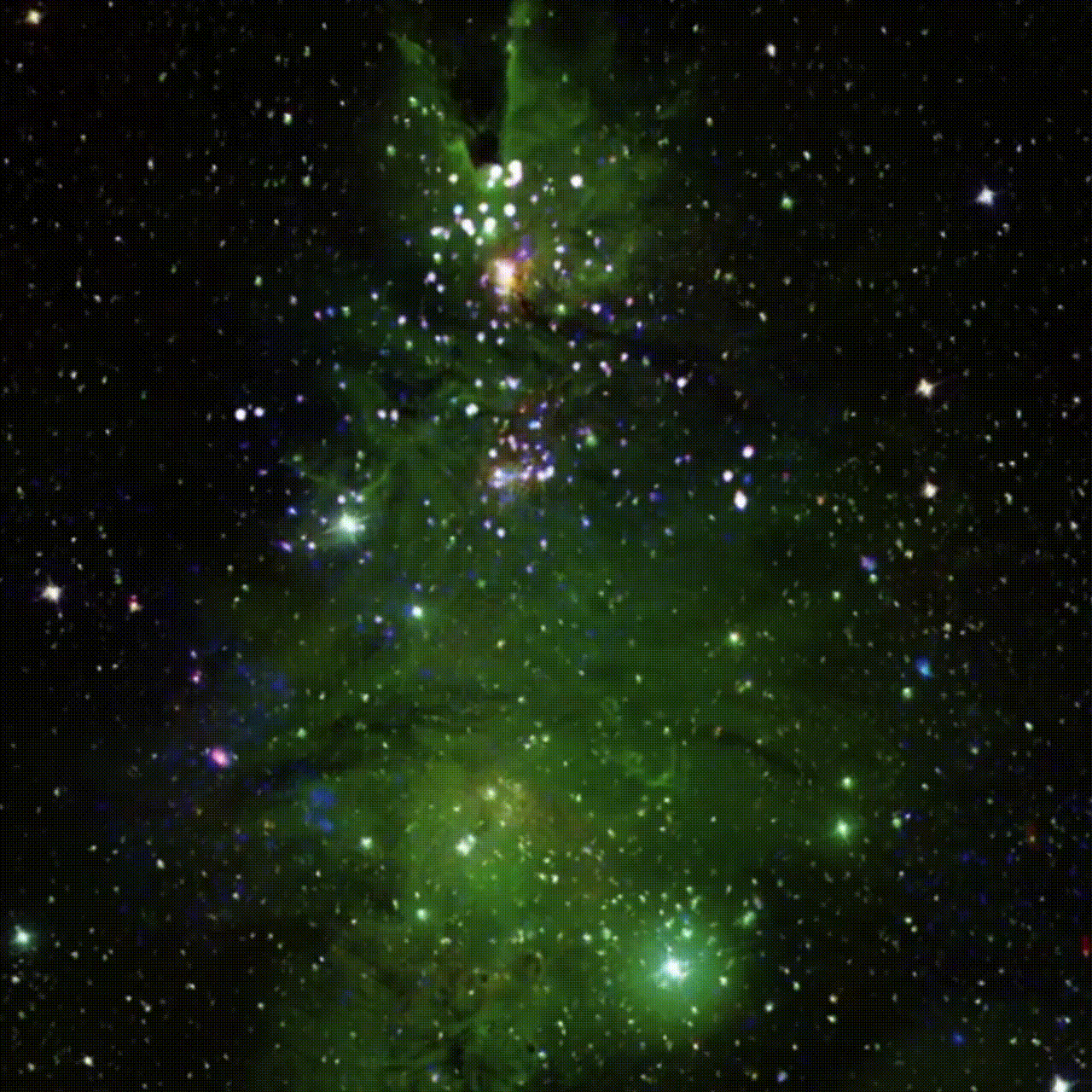
Here’s an appropriately seasonal story for you courtesy of three NASA science platforms: the Chandra X-ray Observatory, the WIYN 0.9-meter telescope on Kitt Peak, and the Two Micron All Sky Survey.
We’ll leave you for a day or two up to Christmas with another NASA story and the release of a new picture of what has come to be known as the Christmas Tree Cluster.
This is NGC 2264, a cluster of young stars — with ages between about one and five million years old — in our Milky Way about 2500 light-years away from Earth. The stars in NGC 2264 are both smaller and larger than the Sun, ranging from some with less than a tenth the mass of the Sun to others containing about seven solar masses.
This new composite image enhances the resemblance to a Christmas tree through some very definite choices of color and rotation. The blue and white lights (which even blink in the gif version of the image below) are young stars that give off X-rays detected by NASA’s orbiting Chandra X-ray Observatory. Optical data from the National Science Foundation’s WIYN 0.9-meter telescope on Kitt Peak shows gas in the nebula in green, corresponding to the “pine needles” of the tree, and infrared data from the Two Micron All Sky Survey shows foreground and background stars in white. This image has been rotated clockwise by about 160 degrees from the astronomer’s standard of North pointing upward, so that it appears like the top of the tree is toward the top of the image.
Which is all fair enough; it’s Christmas after all.

Talking of which, Yuletide greetings to everyone out there. Whether you celebrate or you don’t, whatever your faith or lack of it, we hope you have a wonderful, peaceful time in these depths of the Northern Hemisphere winter as we turn back towards the summer. For our many readers in the Southern Hemisphere, we hope all of the above and that the weather’s nice.
We’ll be back shortly after Christmas with our review of the year on RedShark and then start picking up the pace again as 2024 dawns. CES 2024 starts on January 9, after all, and that’s only 18 days away. 2024? It's going to be an interesting year; I think we can definitely say that…
Full picture credit is: X-ray: NASA/CXC/SAO; Optical: T.A. Rector (NRAO/AUI/NSF and NOIRLab/NSF/AURA) and B.A. Wolpa (NOIRLab/NSF/AURA); Infrared: NASA/NSF/IPAC/CalTech/Univ. of Massachusetts; Image Processing: NASA/CXC/SAO/L. Frattare & J.Major
Tags: Technology


Comments